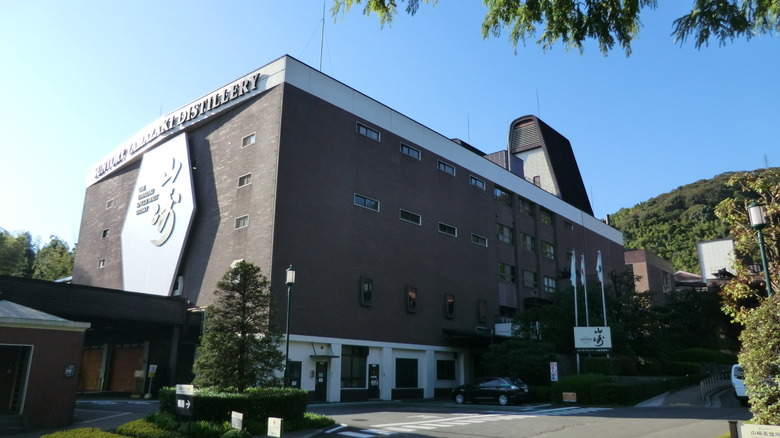This Beautiful And Historic Attraction In Japan Is A Must-Visit For Whisky Lovers
Scotch whisky is one of the world's most iconic liquors. Uisge beatha, the water of life, is drunk around the world and comes with an unmistakable cachet of elegance, sophistication, and class. As the home of single malt, it's hardly surprising that whisky tourism is hugely popular in Scotland. From the salt spray and craggy coastline of Islay, and the Highland distilleries along Scotland's North Coast 500 route, to the huge Speyside whisky houses of Glenfiddich and Glenlivet, a distillery tour is a highlight of any trip to Scotland.
However, single malt whisky is distilled around the world, and whisky connoisseurs will find plenty to discover in a number of other countries. For many years now, Japan has been one of the biggest players in whisky, and a Japanese whisky has even been named as the World's Best Single Malt on several occasions — something that caused quite a scandal when it first happened in 2015. These days, Japan is a paradise for whisky lovers, and Yamazaki, its oldest distillery and the birthplace of Japanese whisky, is a must-visit for lovers of 'the craythur'.
The Suntory Yamazaki distillery is situated in the shadow of Mount Tennōzan, about 13 miles southwest of Kyoto and 20 miles northeast of Osaka, in the Kansai region. It's a short 10-minute walk from a train station that connects to both cities in around 30 minutes. The nearest airport is Osaka Itami, a 40-minute drive away, which serves domestic routes around Japan, while the nearest international airport is Kansai, about an hour and a half away, which connects to destinations worldwide.
The home of Japanese whisky
The Yamazaki distillery was founded in 1923 by master whisky maker Shinjiro Torii. Despite being over 100 years old, it's still the main distillery for House of Suntory whiskies. The building was purpose-built to expand Suntory's early production from port wine to whisky, and it's an impressive sight — a block of red bricks nestled in a sea of green forest, with two distinctive triangular towers rising from the roof. The history and heritage of Japanese whisky-making can be felt in every corner of the site, from the copper gates made from the original pot stills to the 'whisky library' containing seven thousand bottles of unblended malt.
While Yamazaki is a working distillery, it also houses a whisky museum and offers guided tours of the site so visitors can get a fascinating behind-the-scenes peek at what goes into making Suntory's famous drams. The tour follows the whisky-making process step by step, taking visitors on a journey from the unique environmental conditions that make Yamazaki a great place to make whisky, through mashing, fermentation, distillation, and finally aging. At the end of the tour, guests have a chance to taste the finished product, including certain whiskies that are only available in Japan. Alongside the tour, visitors have access to the two-story museum, which explains the history of the Suntory company and the rich heritage of whisky-making in Japan.
The tour is an extremely popular experience, so it's worth making plans early and booking well in advance if you want to visit the distillery. English tours are particularly hard to come by, as they are allocated once a day by lottery, so checking you can visit before making your other plans is worthwhile.
A combination of tradition and modernity
While the Yamazaki distillery will be a highlight of any visit to the Kansai region for whisky-lovers, there's an awful lot more to this corner of Honshu than just the amber liquor. Osaka is famous as Japan's friendliest city, boasting an unbeatable combination of vibrant nightlife, incredible cuisine, and exciting cultural offerings.
Kyoto is another gem, the historic capital of Imperial Japan, and is filled with Buddhist temples, Shinto shrines, and stunning Imperial castles and palaces. It's one of the best places in Japan to get to grips with the country's oldest traditions and customs, like kaiseki dining and geisha performances.
Kansai is best visited during the spring or fall, to catch either Japan's spectacular cherry blossom views or the remarkable colors of the autumn leaves. Its humid, sub-tropical climate means that late-fall and early-winter are great times of the year for a trip, as temperatures are cooler and the storms and typhoons of the rainy season have passed.


